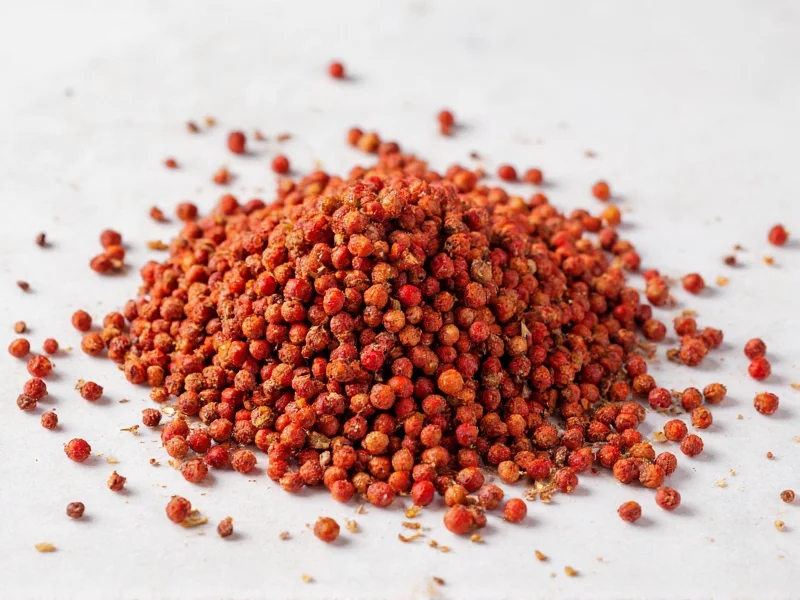Understanding how to effectively replace Szechuan peppercorn requires recognizing its distinctive dual characteristics: a citrusy aroma and the signature ma la numbing sensation that defines authentic Sichuan cuisine. This unique profile makes substitution challenging, as no single alternative perfectly replicates both elements. However, several practical options work well depending on your recipe and ingredient availability.
Why Szechuan Peppercorn Is Difficult to Substitute
Szechuan peppercorn (Zanthoxylum species) isn't actually a true peppercorn but the dried husk of a berry from the prickly ash tree. Its magic lies in hydroxy-alpha sanshool, the compound responsible for the tingling, numbing sensation that sets Sichuan cuisine apart. Unlike black pepper's heat, this sensation activates different nerve receptors, creating that distinctive mouthfeel essential to dishes like mapo tofu and kung pao chicken.
When searching for the best substitute for Szechuan peppercorn in recipes, you're essentially trying to approximate two separate qualities: the citrus-floral aroma and the numbing sensation. Most substitutes address one aspect better than the other, which is why understanding your specific recipe's needs matters.
Top Substitutes Compared
| Substitute | Flavor Profile | Numbing Quality | Best For | Substitution Ratio |
|---|---|---|---|---|
| Sansho pepper | Nearly identical citrus notes | 85-90% of numbing effect | Authentic Sichuan recipes | 1:1 |
| Black pepper +花椒 oil | Peppery with citrus hint | 60-70% (oil provides numbing) | Western kitchens | 1/2 tsp black pepper + 1/4 tsp花椒 oil per tsp Szechuan peppercorn |
| Tellicherry peppercorns | Complex citrus notes | 30-40% (mild numbing) | Dry rubs and marinades | 1:1.5 (use 50% more) |
| Asappago peppercorns | Similar floral notes | 70-80% (strong numbing) | Japanese-inspired dishes | 1:1 |
| Ground allspice | Citrus-clove notes | Negligible | Baking applications | 1/2 tsp per tsp Szechuan peppercorn |
Sansho Pepper: The Closest Alternative
For those seeking the most authentic Szechuan peppercorn alternative for American cooks, Japanese sansho pepper (Zanthoxylum piperitum) offers the closest match. Grown primarily in Japan, sansho delivers similar citrus notes with approximately 85-90% of the numbing sensation. The primary difference is sansho's slightly more floral profile compared to Szechuan peppercorn's lemony brightness.
When using sansho as a Szechuan peppercorn replacement in Chinese cooking, maintain a 1:1 ratio. Toast the peppercorns gently before grinding to maximize flavor release. Sansho works particularly well in dry-fried dishes and spice blends where the numbing quality matters most.
Practical Substitution Strategies for Western Kitchens
For home cooks wondering how to replace Szechuan peppercorn in Chinese cooking without specialty ingredients, a two-part approach yields the best results:
- For the numbing sensation: Use花椒 oil (huājiāo oil), available at most Asian markets. This infused oil captures the numbing compound without requiring whole peppercorns.
- For the citrus-peppery flavor: Combine freshly ground Tellicherry peppercorns (known for their complex citrus notes) with a pinch of ground allspice.
This Szechuan peppercorn substitute for ma la flavor works surprisingly well in stir-fries and braises. For every teaspoon of Szechuan peppercorn called for, use 1/2 teaspoon freshly ground Tellicherry pepper plus 1/4 teaspoon花椒 oil added at the end of cooking.
Where to Find Quality Substitutes
Knowing where to buy Szechuan peppercorn substitutes makes a significant difference in your cooking results. Sansho pepper appears in Japanese grocery stores and increasingly in well-stocked Western supermarkets. For花椒 oil, check the Asian ingredients section of larger grocery chains or order from reputable online spice merchants.
Avoid pre-ground substitutes when possible—whole peppercorns retain their volatile oils much longer. Store any Szechuan peppercorn alternative in an airtight container away from light and heat to preserve the delicate citrus compounds that degrade quickly.
Recipe-Specific Substitution Guidance
The ideal Szechuan peppercorn replacement ratios vary by dish type:
- Dry-fried dishes: Sansho pepper at 1:1 ratio works best to maintain the signature mouth-numbing quality
- Soups and braises: Use花椒 oil (1/4 tsp per serving) added at the end of cooking to preserve the numbing sensation
- Marinades: Tellicherry peppercorns ground with a touch of star anise provides excellent depth
- Spice blends: For homemade five-spice powder alternatives, use equal parts sansho, star anise, fennel, cloves, and cinnamon
When experimenting with a homemade Szechuan peppercorn substitute, start with half the recommended amount and adjust to taste. The numbing sensation builds gradually, so it's easier to add more than to correct an overly numbing dish.
Understanding Flavor Limitations
No substitute perfectly replicates authentic Szechuan peppercorn's unique profile. The hydroxy-alpha sanshool compound creates a physiological response distinct from capsaicin (chili heat) or piperine (black pepper heat). This explains why many Szechuan peppercorn alternative for American cooks falls short of the authentic experience.
When Szechuan peppercorns are completely unavailable, focus on capturing either the citrus note or the numbing sensation—trying to replicate both often results in an unbalanced dish. For most Western kitchens, the black pepper and花椒 oil combination provides the most accessible and effective solution without requiring specialty ingredients.











 浙公网安备
33010002000092号
浙公网安备
33010002000092号 浙B2-20120091-4
浙B2-20120091-4